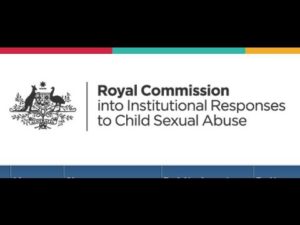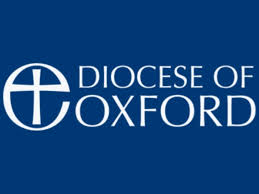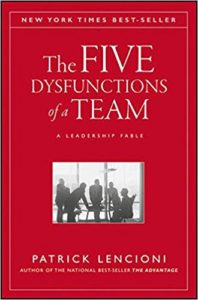 The expression ‘toxic masculinity’ has recently entered the vocabulary of the politically and socially aware, especially in the States. It describes an angry and aggressive attempt by men to control the levers of power in society and elsewhere. From the perspective of women, this takeover reflects a continuation of an age-old patriarchy in society. This declared that men have a God-given right to be supreme and take control over women and children. The voices of women are thus not always heard because men have occupied many of the places of influence and control.
The expression ‘toxic masculinity’ has recently entered the vocabulary of the politically and socially aware, especially in the States. It describes an angry and aggressive attempt by men to control the levers of power in society and elsewhere. From the perspective of women, this takeover reflects a continuation of an age-old patriarchy in society. This declared that men have a God-given right to be supreme and take control over women and children. The voices of women are thus not always heard because men have occupied many of the places of influence and control.
This week, in the forum of the American Senate, we have seen this ancient conflict on display. A woman who credibly claims to have been assaulted by a rich privileged young man 36 years ago gave her testimony. Against her was the accused, Judge Brett Kavanaugh. He responded with the angry impetuous male voice of someone who seems never to have had his male superiority challenged. The anger was directed not only against the female accuser; it was also aimed at anyone who asked him to give some account of his actions and memories of the time. The responses were often simply petulant and bad-tempered. To me they seemed like the response of a child who has always been pampered and allowed to have anything he wants.
After listening to the judge’s unconvincing defence, we have learnt certain facts about his religious past. The private school he attended was a Jesuit school and subsequently Brett Kavanaugh became involved in an extremely conservative group called the Federalist Society. This is a group of lawyers dedicated to promoting right wing causes. These centre around issues that inflame all religious conservatives, and they include birth control, anti-abortion and the restriction of gay rights. Of the 18 senior lawyers on Trump’s long list for Supreme Court nominations, 16 have been suggested and backed by this Society. With Supreme Court opinion now finely balanced, Trump’s nominations are all designed to push the Court into making future judgments which will promote the values and ethics of the Right. These are typically the masculine values that want to control women and their bodies.
It would be right to claim that Biblical patriarchy and ultra-right politics are close allies. The Church of Rome, to put it mildly, has always had a problem with understanding the perspective of women. This blindness to the complexities of female experience is shared by a large swathe of Protestant ‘biblical’ opinion. There the vagaries of female experience can, it is assumed, be swept away by declaring that every woman should come under the ‘covering’ of a man. This may be her husband or father. We have on this blog discussed the ‘biblical’ commands for women to obey men in every sphere. Clearly such sentiments have little to commend them in the 21st Century. But pressure groups like the Federalist Society, Bible Colleges and other fundamentalist/right-wing groups within American society still provide a home for people who are drawn to these reactionary ideas.
At the IICSA hearings in July, on Peter Ball, we heard evidence for what appears to be a ‘toxic masculinity’ at the heart of the Anglican Church. A men-only dining club that meets regularly at Lambeth Palace, known as Nobody’s Friends, appears to be a gathering for socially very well-connected Anglicans. Although originally high church in its origins, the club provides an opportunity for a privileged church group to network and sometimes lobby those in authority in the Church. Lord Lloyd, a long-time member, sent a letter to Archbishop Carey on behalf of Peter Ball. His letter contained the words ‘May I presume on a brief acquaintance at dinners of Nobody’s Friends?’ The IICSA hearing referred to a Daily Mail report about Nobody’s Friends as ‘centred on a strong core of bishops, ex-Tory ministers …. a highly secretive, all male group representing Britain’s most entrenched professions and institutions.’
The Nobody’s Friends dining group has been described as ‘private’ rather than a secret group, but it still represents an exclusive world of male privilege within the heart of the Anglican establishment. When Bishop John Bickersteth once revealed that his appointment to Bath and Wells followed his being ‘spotted’ at a Nobody’s dinner, we began to get the feeling that the values of our church may incline towards corporate and institutional interests rather than a personal morality based on the Sermon on the Mount. Is this perhaps a male versus a female thing? Are women perhaps better at understanding the imperative of always keeping personal morality to the fore while men value the power and privileges of the institution as things to be protected at all costs?
The experience of survivors of sexual abuse reporting to authority seems to take two forms. Sometimes they meet genuine compassion and care, whether from individual bishops or Diocesan Advisers. On other occasions they encounter the harsh edge of a system whose chief value seems to be to protect itself. I have loosely described these two approaches as female and male respectively. Obviously not all men are comfortable with the world represented by men-only dining clubs. Such groups all too easily use the power of their connections to believe themselves naturally at the pinnacle of entitlement within the institution. Similarly, not all women in power are necessarily going to stick up for an individual survivor when the weight of the privileged institution threatens to crush them. Nevertheless, my crude simplification picks up something important that is active both in American society and in ‘private’ places within our national church. Toxic masculinity and the ‘old-boy network’ are still forces to be reckoned with. We also saw it in operation among Iwerne connected evangelicals when they succeeded in spiriting John Smyth out of the country to Zimbabwe where he could no longer embarrass his old friends.
Sexual abuse scandals in the Church of England are never just about failing individuals such as Ball and Smyth. These scandals go further, to implicate others who influenced them in institutions, sometimes those which were the providers of great privilege. Subsequently, similar groups gathered round to protect them as best they could when things went wrong.
Toxic masculinity seems to be found as an underlying value in both politics and religion. It takes as a given the underlying assumption that the male of the species is superior to the female. All the morality that flows out of this assumption is inevitably toxic. It needs to be constantly challenged and exorcised from our thinking and our theology.
Further information on Nobody’s Friends can be found on the Wikipedia page






